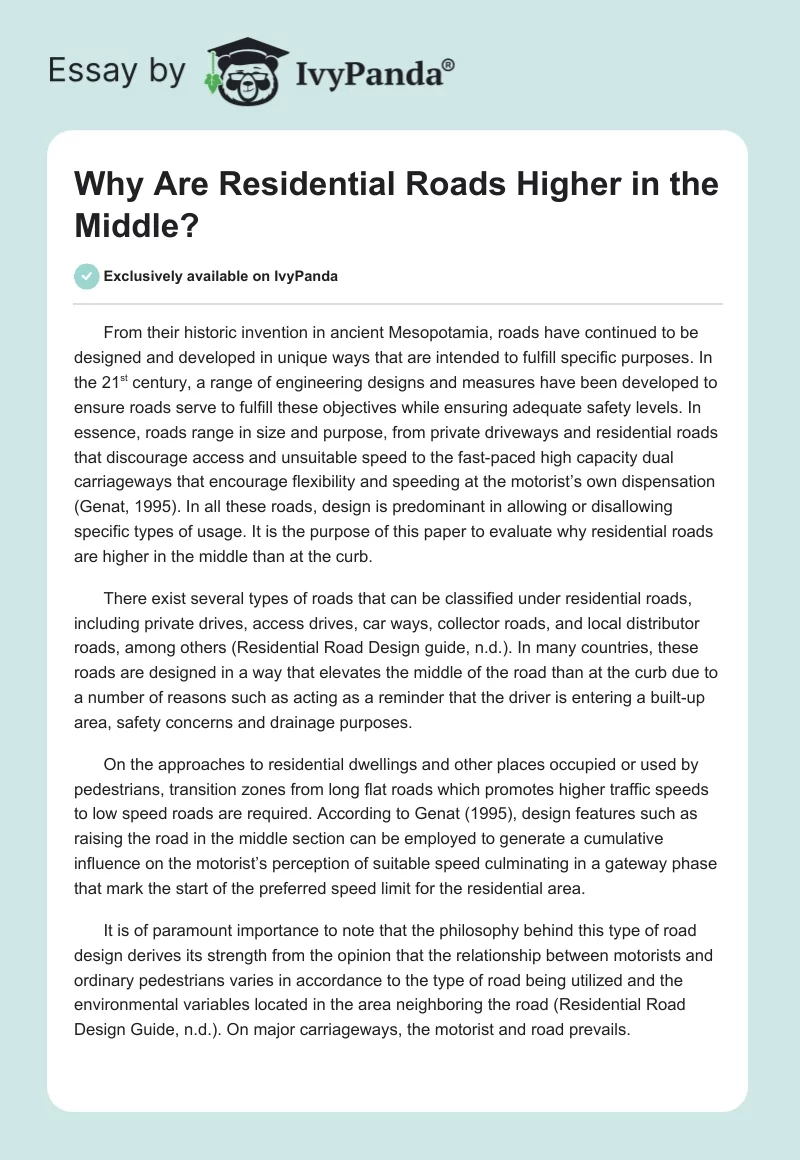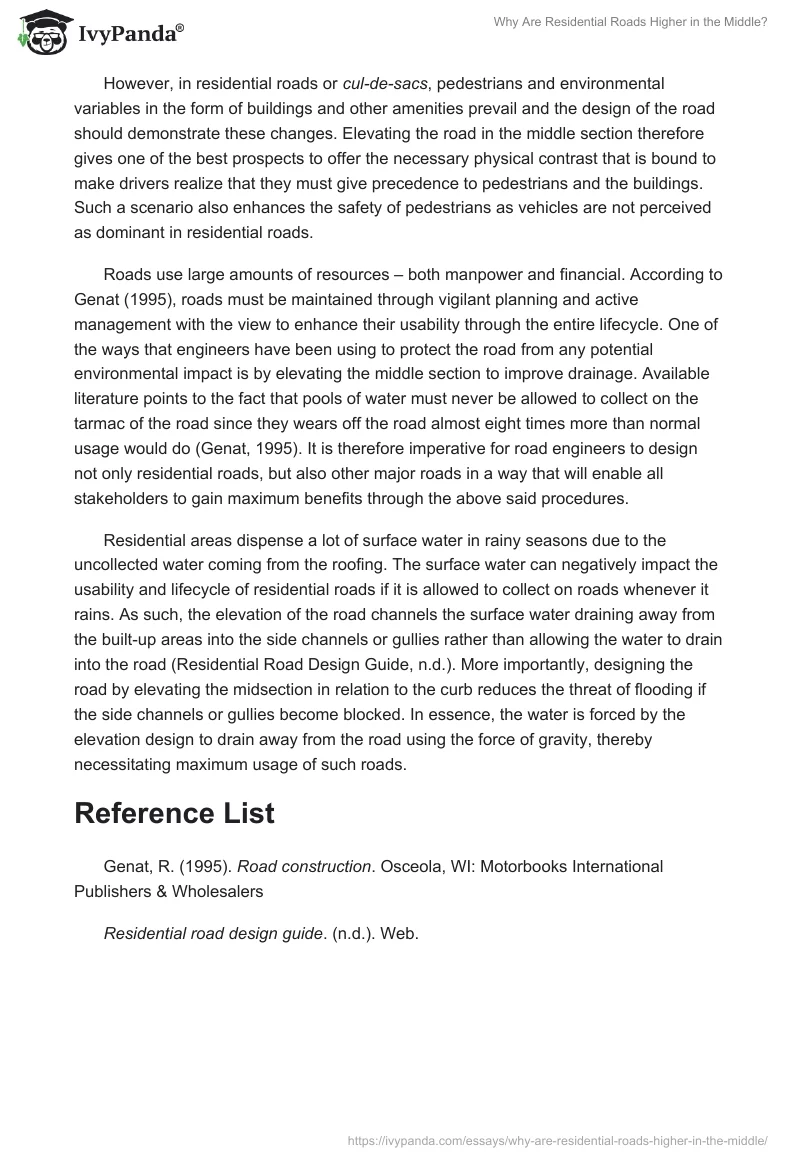From their historic invention in ancient Mesopotamia, roads have continued to be designed and developed in unique ways that are intended to fulfill specific purposes. In the 21st century, a range of engineering designs and measures have been developed to ensure roads serve to fulfill these objectives while ensuring adequate safety levels. In essence, roads range in size and purpose, from private driveways and residential roads that discourage access and unsuitable speed to the fast-paced high capacity dual carriageways that encourage flexibility and speeding at the motorist’s own dispensation (Genat, 1995). In all these roads, design is predominant in allowing or disallowing specific types of usage. It is the purpose of this paper to evaluate why residential roads are higher in the middle than at the curb.
There exist several types of roads that can be classified under residential roads, including private drives, access drives, car ways, collector roads, and local distributor roads, among others (Residential Road Design guide, n.d.). In many countries, these roads are designed in a way that elevates the middle of the road than at the curb due to a number of reasons such as acting as a reminder that the driver is entering a built-up area, safety concerns and drainage purposes.
On the approaches to residential dwellings and other places occupied or used by pedestrians, transition zones from long flat roads which promotes higher traffic speeds to low speed roads are required. According to Genat (1995), design features such as raising the road in the middle section can be employed to generate a cumulative influence on the motorist’s perception of suitable speed culminating in a gateway phase that mark the start of the preferred speed limit for the residential area.
It is of paramount importance to note that the philosophy behind this type of road design derives its strength from the opinion that the relationship between motorists and ordinary pedestrians varies in accordance to the type of road being utilized and the environmental variables located in the area neighboring the road (Residential Road Design Guide, n.d.). On major carriageways, the motorist and road prevails.
However, in residential roads or cul-de-sacs, pedestrians and environmental variables in the form of buildings and other amenities prevail and the design of the road should demonstrate these changes. Elevating the road in the middle section therefore gives one of the best prospects to offer the necessary physical contrast that is bound to make drivers realize that they must give precedence to pedestrians and the buildings. Such a scenario also enhances the safety of pedestrians as vehicles are not perceived as dominant in residential roads.
Roads use large amounts of resources – both manpower and financial. According to Genat (1995), roads must be maintained through vigilant planning and active management with the view to enhance their usability through the entire lifecycle. One of the ways that engineers have been using to protect the road from any potential environmental impact is by elevating the middle section to improve drainage. Available literature points to the fact that pools of water must never be allowed to collect on the tarmac of the road since they wears off the road almost eight times more than normal usage would do (Genat, 1995). It is therefore imperative for road engineers to design not only residential roads, but also other major roads in a way that will enable all stakeholders to gain maximum benefits through the above said procedures.
Residential areas dispense a lot of surface water in rainy seasons due to the uncollected water coming from the roofing. The surface water can negatively impact the usability and lifecycle of residential roads if it is allowed to collect on roads whenever it rains. As such, the elevation of the road channels the surface water draining away from the built-up areas into the side channels or gullies rather than allowing the water to drain into the road (Residential Road Design Guide, n.d.). More importantly, designing the road by elevating the midsection in relation to the curb reduces the threat of flooding if the side channels or gullies become blocked. In essence, the water is forced by the elevation design to drain away from the road using the force of gravity, thereby necessitating maximum usage of such roads.
Reference List
Genat, R. (1995). Road construction. Osceola, WI: Motorbooks International Publishers & Wholesalers
Residential road design guide. (n.d.). Web.


